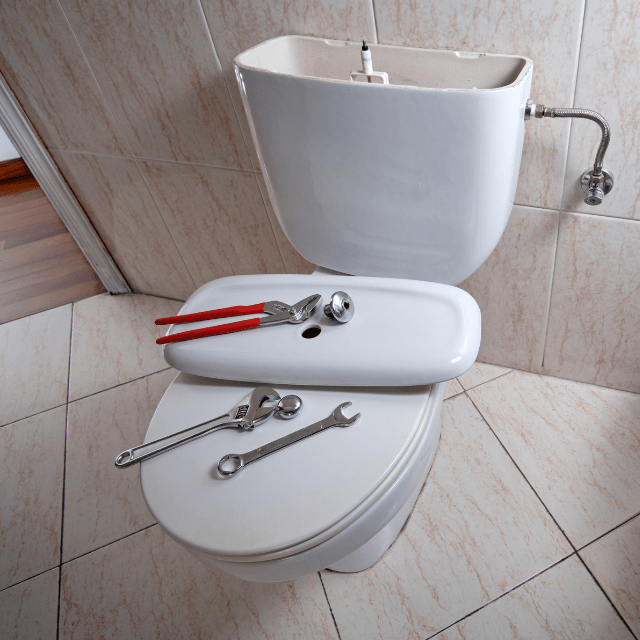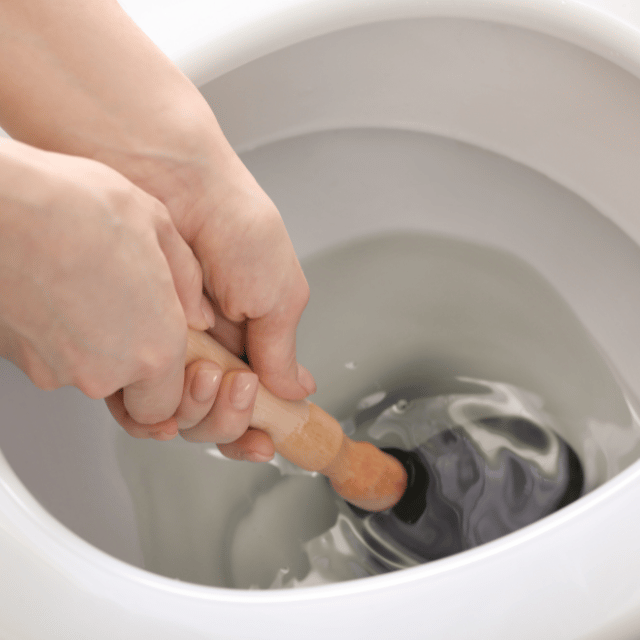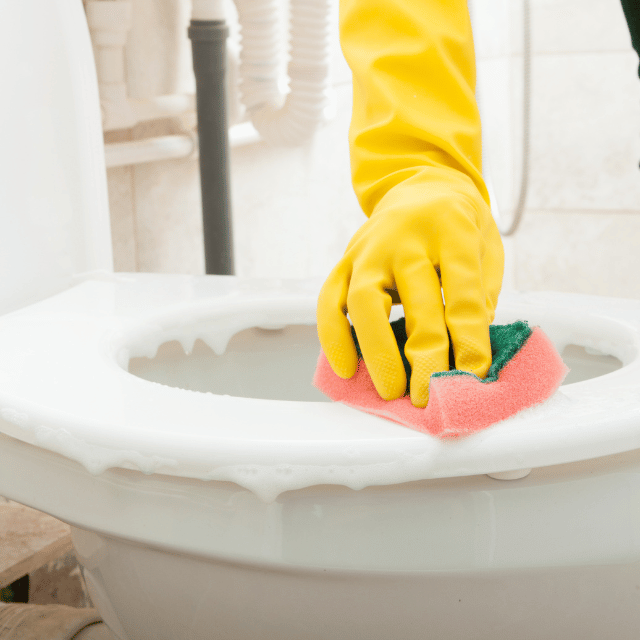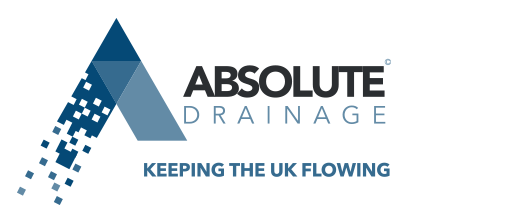We’ve all had to deal with a blocked toilet and understand it’s a massive inconvenience. There is a list of different causes for a blocked toilet, let it be toilet paper, foreign objects or general debris, it helps knowing how to unblock your toilet and potentially save yourself time and money. Here’s a step-by-step guide to help you unblock your toilet!
What You’ll Need
Before you begin, make sure you have all the tools you’ll need:
• Rubber gloves
• A plunger
• A bucket
• Towels or cloths
• Cleaning supplies (disinfectant and brushes)
Step 1: Assess the Situation

Firstly, it’s important to assess the blockage. If the toilet is overflowing, avoid flushing it again to prevent your bathroom becoming flooded. Instead, wait a few minutes to see if the water level drops by itself. If the water level does not go down, be careful when unblocking your toilet.
Step 2: Prevent Flooding
Place towels or cloths around the base of the toilet to absorb any water that might spill over. Keep your bucket nearby to deal with any water that fills over the toilet.
Step 3: Using the Plunger

A plunger is often the only tool you’ll need to unblock your toilet, here’s how to use it:
1. Make sure there is suction: Place the plunger over the toilet’s drain, making sure there’s enough water in the bowl to cover the plunger’s rubber part.
2. Creating a Seal: Press down firmly to create a seal around the drain.
3. Plunge the toilet: Push and pull the plunger for about 20-30 seconds. This creates pressure to dislodge the blockage.
4. Check the results: Remove the plunger and check if the water drains. If not, repeat the plunging process a few more times.
Step 4: Cleaning Up

If you’ve successfully unclogged your toilet, it’s important to clean up after the process:
1. Bin any waste: Empty any water collected in the bucket and dispose of any debris.
2. Clean the Tools: Wash and disinfect the plunger.
3. Clean the Toilet: Use a disinfectant cleaner to sanitise the toilet bowl, seat, and around the toilet where water could have splashed.
Prevent Future Blockages
To reduce the risk of future toilet blockages, follow these steps:
1. Use Toilet Paper Sparingly: Try and avoid using excessive amounts of toilet paper in the same flush.
2. Avoid Flushing Other Items: Toilets are designed to only flush toilet roll and waste. With other objects like sanitary products, paper roll or wipes, make sure to bin these instead of flushing them.
3. Regular Maintenance: Occationally inspect your drainage system or call us to arrange a CCTV drain survey to address any future drainage issues before they block the toilet again.
Call us if you’re unsuccessful
If your efforts result in the toilet still being blocked, it’s best to give us a call to escalate the unblocking. As DIY unblocking usually solves most issues, if it remains after this guide it could mean there is a more serious issue with your drainage system which will need professional assistance to unblock.
We’re equipped to handle any drainage issues you may have. From routine maintenance to emergency unblocking services, we can handle it all. Contact us anytime for efficient drainage solutions to keep your drainage system in top condition. Call us on 0333 344 6702 for 24/7 drain services.

